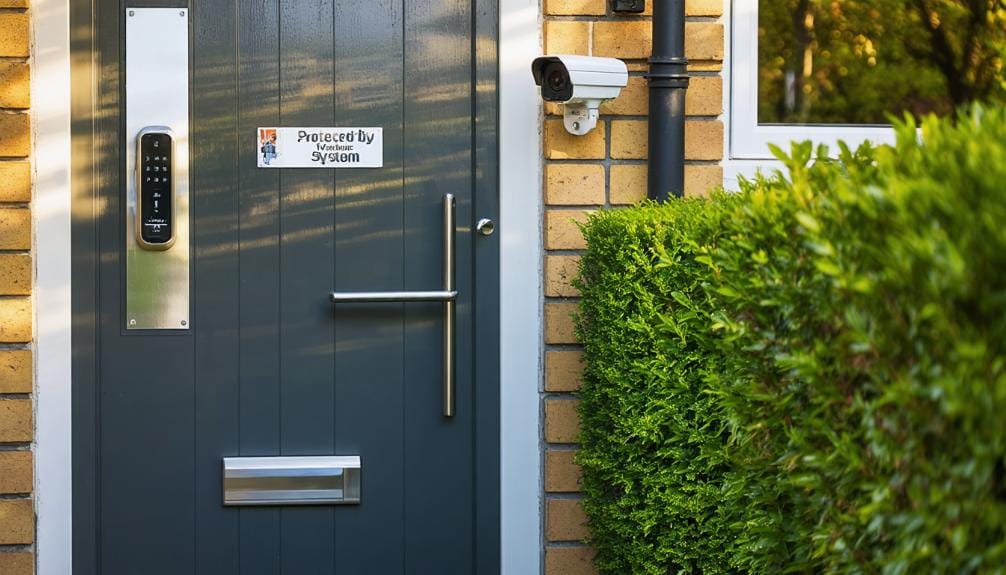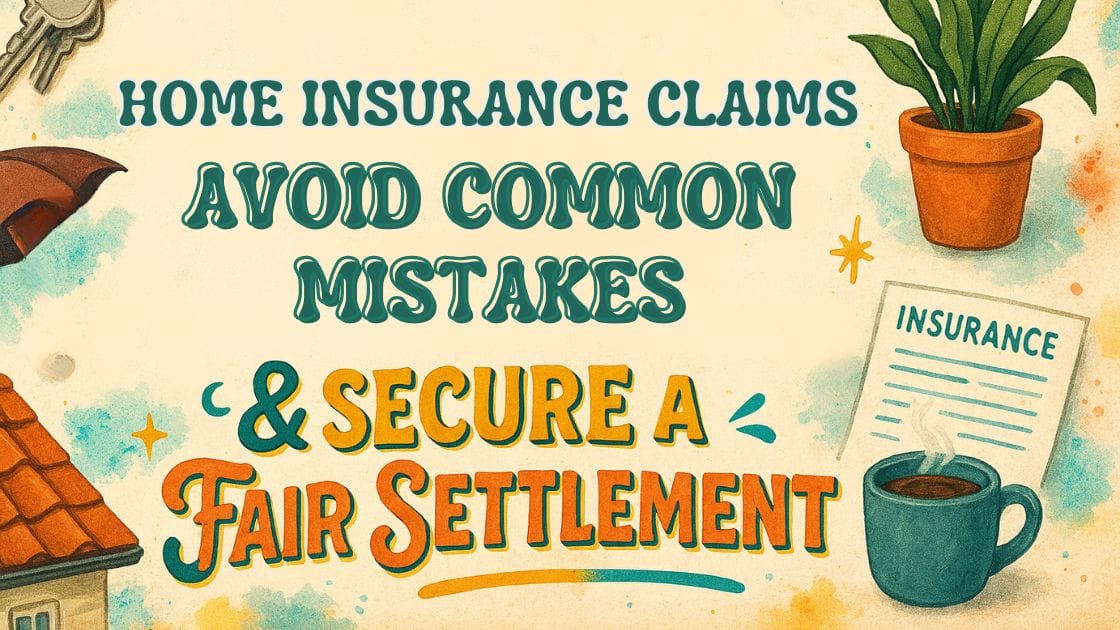One of the most common concerns for homeowners in the UK is whether their home insurance actually covers theft and burglary. Although UK policies usually use the term “home insurance” rather than “homeowners insurance,” theft and burglary cover works similarly: it depends on forced entry, security requirements, and proof of ownership.
If you’re searching “does homeowners insurance cover burglary,” this guide explains what’s typically covered in the UK and how to avoid common claim issues.
Standard UK home insurance policies cover theft and burglary claims, providing protection for both buildings and contents. Coverage includes structural damage resulting from break-ins and stolen personal belongings, although high-value items may necessitate additional protection.
Claims typically require police reports and proof of ownership, while having security measures in place, such as monitored alarms, can help reduce premiums. The location and crime rates can influence the cost of coverage.
Knowing your policy and its limitations is crucial for peace of mind. But did you know that PCLA, your local claims management experts, can help you manage the complexities of your policy and secure the settlement you deserve?
Key Takeaways
- Standard UK home insurance typically covers both theft and burglary, including damage to property and stolen contents within specified limits.
- Claims require police reports and proof of ownership, with burglary claims covering both stolen items and structural damage.
- High-value items over £2,000 must be specifically listed on the policy for coverage, as standard policies have value caps.
- Homes left unoccupied for over 30 days may void theft coverage, and business-related thefts are generally excluded.
- Security measures such as monitored alarms and proper locks can reduce premiums and are often required for valid coverage.
Understanding Basic Home Insurance Coverage for Theft in the UK

With theft statistics indicating that burglary remains a significant concern, homeowners require comprehensive protection through both buildings and contents insurance.
Most standard policies offer two main types of coverage. Buildings insurance protects the structure of the property itself, while contents insurance safeguards your personal belongings.
Have you thought about what is actually covered under your policy?
Insurance premiums often depend on the security measures you have implemented. Simple steps, such as proper door locks and window security, can make a difference.
Remember that leaving doors unlocked or windows open could invalidate your coverage.
Be aware that high-value items may need additional protection. Some policies impose limits on jewellery, electronics, and cash, making it crucial to review your coverage carefully.
A standard policy typically requires you to notify your insurer within 24 hours of any theft incident.
Key Differences Between Theft, Burglary, and Robbery Claims
Understanding the legal distinctions between theft, burglary, and robbery directly impacts how insurance claims are processed and paid out in the UK.
The differences go beyond simple definitions: theft involves taking property without force, burglary requires forced entry into a building, whilst robbery involves direct confrontation with victims.
These distinctions affect coverage levels, claim requirements, and potential compensation amounts that policyholders can expect from their insurance providers. Police reports are essential documentation required when filing any theft-related insurance claim.
For a breakdown of what theft and burglary insurance claims typically include, this article is a useful starting point.
Legal Terms Explained
Many homeowners struggle to distinguish between theft, burglary, and robbery when filing insurance claims. Understanding these legal definitions is essential for navigating insurance terminology and ensuring proper coverage.
Burglary involves unlawful entry into a building with criminal intent – typically to steal property. This differs from theft, which occurs when someone takes property without permission but does not necessarily involve breaking in.
For example, a burglar breaking a window to enter your home differs from a guest stealing items during a party. Most insurance companies offer burglary insurance coverage that indemnifies victims for stolen items and property damage.
Robbery adds another dimension by introducing force or threats against a person. If someone threatens you with violence while taking your belongings, that constitutes robbery – not burglary or theft.
These distinctions matter because insurance policies often treat each scenario differently. If your home has been targeted, here’s what steps to take straight after a burglary to make sure your claim goes smoothly.
Coverage Comparison Chart
A thorough comparison chart assists homeowners in swiftly identifying how different types of property crimes impact their insurance coverage.
Understanding these distinctions ensures you receive appropriate compensation when filing a claim.
Key differences in the coverage comparison include:
- Theft claims require police reports and proof of ownership, but typically have lower insurance premiums due to minimal property damage.
- Burglary claims encompass both stolen items and structural damage, making them more complex to process and often resulting in higher premiums.
- Robbery claims may include additional coverage for personal trauma and immediate security upgrades.
Documentation requirements vary for each type of claim.
Most insurers expect detailed inventories of missing items, supported by photographs or receipts.
Property owners should regularly review their coverage limits to ensure adequate protection against all three scenarios.
The Essential Steps to Filing a Successful Theft Claim
Filing a successful theft claim begins with prompt and decisive action following a burglary. Proper claim documentation ensures a smoother process, while effective theft prevention measures demonstrate responsible homeownership to insurers.
| Essential Steps | Why It Matters |
|---|---|
| Police Report | Creates an official record |
| Item List | Documents your losses |
| Photos/Videos | Proves ownership of items |
| Contact Insurer | Initiates the claim process |
| Secure Property | Prevents further loss |
Once these initial steps are completed, maintain regular communication with your insurer and provide any additional documentation they request. Be aware that most claims take between 4-8 weeks to process, although complex cases may require more time. Stay organised by keeping copies of all paperwork and maintaining a clear timeline of events. Consider the potential impact on your future insurance premiums when deciding whether to file a theft claim.
You can also read this practical guide on how to file a theft or burglary insurance claim in the UK, including how a claims management service can help.
How Location and Crime Rates Impact Your Insurance Coverage
Location plays a significant role in determining both the cost and scope of home insurance coverage across the UK. Insurance providers carefully analyse crime statistics and postcode data to assess risk levels in different areas. This location impact directly affects premium costs and policy conditions.
Living in areas with higher crime rates typically means paying more for coverage. However, homeowners can often offset these costs by implementing security measures:
- Installing monitored alarm systems
- Adding high-security locks and windows
- Participating in neighbourhood watch programmes
Many insurers offer specialised coverage options for high-risk areas. While premiums might be higher, these policies often include essential features like alternative accommodation coverage and new-for-old replacement guarantees.
Regular security audits can help identify vulnerabilities and potentially improve insurance terms.
Security Measures That Can Reduce Your Insurance Premiums

Several key security measures can significantly reduce home insurance premiums while protecting your property from theft and burglary.
Installing modern security upgrades such as burglar alarms, CCTV cameras, and wireless security systems demonstrates a commitment to property protection, often leading to enticing insurance incentives. It’s essential to inform your neighbours when installing CCTV systems.
Proper lighting plays a crucial role in deterring criminals.
Sensor-activated exterior lights and adequate illumination for CCTV systems make homes less appealing to potential intruders. Many insurers offer discounts for these protective features.
High-quality locks and physical barriers form the foundation of home security.
Five-lever mortice deadlocks and multi-point locking systems are particularly valued by insurance providers.
Combined with secure storage solutions like properly installed safes, these measures create a comprehensive security package that can substantially lower insurance costs.
Common Exclusions and Limitations in Theft Coverage
Understanding home insurance exclusions and limitations can prevent unpleasant surprises when filing theft claims. Many common theft misconceptions stem from misunderstanding what standard policies actually cover.
To help dispel coverage myths, here are key exclusions homeowners should be aware of:
- Items stolen from unoccupied homes (vacant for 30+ days)
- High-value belongings without additional coverage
- Business-related theft and short-term rental losses
Most policies require proof of ownership and police reports when filing claims. Standard coverage often excludes cyber attacks and cryptocurrency losses. Regular policy reviews and maintenance can help ensure adequate protection for your home and valuables.
Additionally, keep in mind that visitor belongings may have limited protection as well.
The good news? You can enhance your protection by discussing these limitations with your insurer and adding specific coverage where necessary.
Don’t wait until after a theft to discover what your policy actually covers.
Don’t miss this advice on why theft-related claims sometimes get refused by insurers and how to reduce the risk.
Special Coverage Options for High-Value Items and Belongings
Standard home insurance policies often impose strict limits on high-value items such as jewellery and art, necessitating additional coverage options for comprehensive protection against theft.
High-risk items include expensive pieces with a coverage limit of £5,000 under standard policy terms.
Electronics generally have specific coverage limits that may require adjustment based on their value and level of risk.
Homeowners can enhance their protection by individually listing prized items in their policy and obtaining professional appraisals to ensure adequate coverage in the event of theft or damage.
Jewellery and Art Coverage
Most homeowners don’t realise that their precious jewellery and art pieces require special attention when it comes to insurance coverage.
Standard home insurance policies often have strict limits on significant items, making proper jewellery valuation and art appraisal vital for adequate protection.
Here’s what you need to know about protecting your valuables:
- Items worth over £2,000 typically need to be specified individually on your policy.
- Personal possessions coverage is important for protecting jewellery outside your home.
- High-value art pieces usually require specialist insurance beyond standard coverage.
Remember that professional valuations may be required for expensive pieces.
This helps ensure you’ll receive fair compensation if theft occurs.
While standard policies offer basic protection, adding specialised coverage gives you peace of mind knowing your cherished items are fully protected both at home and worldwide.
For art collectors, insurance provides unspecified art cover that collectively protects items valued up to £100,000 without requiring individual listing.
Electronics Protection Limits
A startling number of homeowners reveal their electronics aren’t fully protected after a theft occurs.
Standard home insurance policies often come with electronics coverage limits that may fall short of replacing high-value devices.
Most insurers cap coverage at £2,000 per item unless specifically listed on the policy.
Have you checked if your gaming setup or home office equipment exceeds this limit? Many homeowners require additional coverage for their premium electronics.
Accidental damage options can provide extra protection beyond basic theft coverage.
These add-ons typically cover mishaps such as spilled drinks on laptops or dropped tablets.
While they may slightly increase monthly premiums, they offer significant peace of mind for expensive devices.
Remember to document serial numbers and keep receipts to optimise future claims.
Your insurer may require this evidence to process claims efficiently.
Need Help With Theft and Burglary Claims?
Knowing whether your home insurance covers theft and burglary is crucial for protecting your property and financial well-being. Don’t leave it to chance. PCLA’s claims management service, based in Northern Ireland, can provide expert guidance and manage your claim from start to finish.
Contact us today for a free, no-obligation survey. We’ll assess your situation, explain your policy coverage, and fight for the maximum settlement possible. No win, no fee. Let PCLA handle the stress of your theft or burglary claim.
Making Your Home Less Attractive to Thieves: Best Practices
While many homeowners focus on securing their possessions inside, making your home less appealing to thieves starts with the property’s exterior appearance.
With 35% shredding documents to minimise their risk of being targeted, taking preventive measures is crucial.
Effective home security begins with removing potential tools that thieves might use to break in, such as ladders and garden equipment.
Consider these proven deterrents against thieves:
- Install motion-activated lighting around entry points.
- Maintain tidy landscaping to eliminate hiding spots.
- Keep windows clear of obstructing bushes or trees.
Creating a well-maintained exterior sends a clear message that the property is actively monitored.
Collaborating with neighbours through community watch programmes adds another layer of protection.
Keep in mind that most burglars look for easy targets – homes that appear neglected or provide convenient cover.



